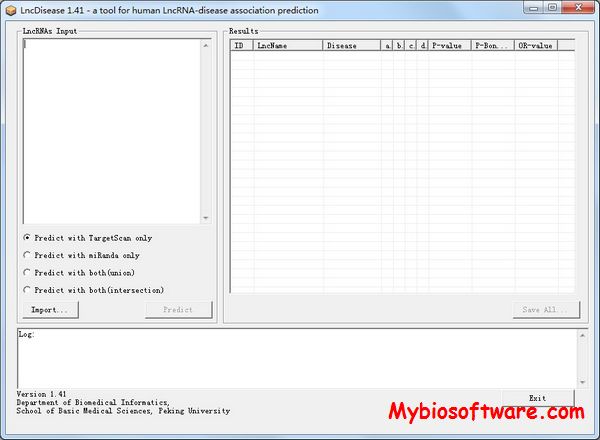Genie 2.7.2.1
:: DESCRIPTION
GENIE (previously PEDGENIE and HAPMC) performs tests of association and transmission disequilibrium (TDT) between genetic markers and traits in studies of arbitrarily-sized families and/or independent individuals using Monte Carlo testing. For dichotomous traits, basic genotype-based or allele-based Chi-square statistics, OR, and a Chi-square trend statistic with user-defined weights, TDT, sib-TDT, combined-TDT are included. For quantitative outcomes, a difference in means test, ANOVA and QTDT are offered. Flexible haplotype testing and meta analysis across multiple centers are available. An automated haplotype building module, hapConstructor, is also offered that data mines multi-locus data for association signals. The Monte Carlo empirical significance assessment accounts for all relatedness between individuals for all tests
::DEVELOPER
Genetic Epidemiology University of Utah
:: SCREENSHOTS
N/A
::REQUIREMENTS
- Linux/Windows/MacOsX
- Java
:: DOWNLOAD
 Genie
Genie
:: MORE INFORMATION
Citation
Allen-Brady K, Wong J, Camp NJ (2006).
PedGenie: An Analysis Approach for Genetic Association Testing in Extended Pedigrees and Genealogies of Arbitrary Size.
BMC Bioinformatics 2006 7:209
Curtin K, Wong J, Allen-Brady K, Camp NJ (2007).
PedGenie: Meta Genetic Association Testing in Mixed Family and Case-Control Designs.
BMC Bioinformatics 2007 8:448
Curtin K, Wong J, Allen-Brady K, Camp NJ (2007).
Meta-genetic association of rheumatoid arthritis and PTPN22 using PedGenie 2.1
BMC Proc. 2007;1 Suppl 1:S12. Epub 2007 Dec 18


 NO
NO